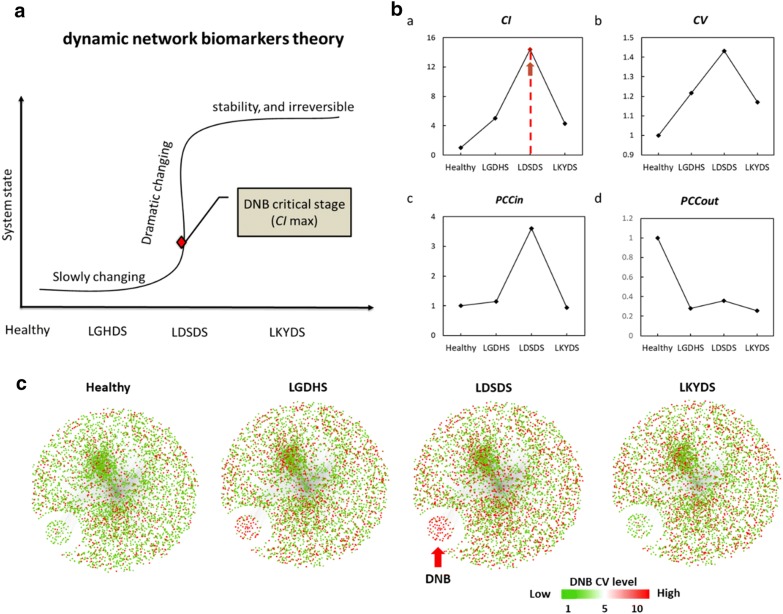Fig. 2.
A brief model of dynamic network biomarkers (DNB) theory and DNB analysis results. a Liver-gallbladder dampness-heat syndrome (LGDHS) (excess TCM syndrome) usually happens at disease onset or TCM-syndrome change. After the tipping point, the system drastically deteriorates to weakness, for instance, liver-kidney yin-deficiency syndrome (LKYDS) (deficiency TCM syndrome). The DNB method can identify the dramatic changing state by analyzing molecular fluctuations at each stage. b These four diagrams visually show the three key criteria of DNBs over four different stages during TCM-syndrome progression. CV is the average coefficient of variance of the DNBs, PCCin is the average Pearson correlation coefficient (PCC) of the cluster of molecules in absolute values, and PCCout is the average PCC between the cluster of molecules and other molecules in absolute values, after comparing with the corresponding controls. CIs were calculated according to the DNB formula (method) to seek the system tipping point. After calculation, LDSDS was recognized as the critical stage of TCM-syndrome progression. c Series of illustrations of dynamic changes in the network structure. Node color reflects the CV of the corresponding molecule. Clearly, DNBs are strongly correlated and fluctuated at the LDSDS stage

